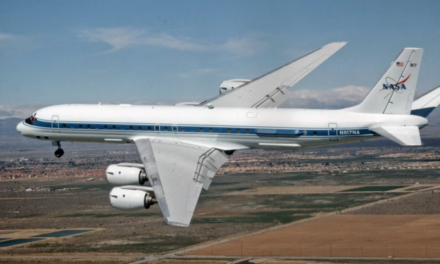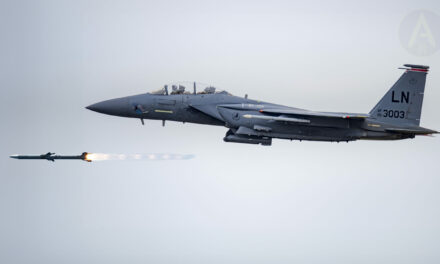The F-15 Eagle
The F-15 Eagle is an all-weather, extremely maneuverable, tactical fighter designed to permit the Air Force to gain and maintain air supremacy over the battlefield.
Since 1976 the F-15 has defended the skies with a track record of success unlike any other fighter jet in the history of aviation.
A claim confirmed by the fact that the Eagle has an unmatched air-to-air kill ratio of 104 to 0.
A-4 nearly destroys an F-15 in mock combat
One aircraft that perhaps came closest to destroying an Israeli F-15 Baz in ‘combat’ was the venerable McDonnell Douglas A-4 Skyhawk. These nimble little aircraft have been used by both the US Navy and the Israeli Air Force (IAF) as ‘Red Air’ aggressors, using their agility to humble mightier opponents.
As explained by Bertie Simmonds in his book F-15 Eagle, in May 1983, two IAF F-15Ds including one 106 Squadron F-15D Baz (957) named ‘Sky Blazer’, were in mock combat with four A-4N Skyhawks over Nahal Tzin in the Negev when the two aircraft collided. Thankfully, the pilot of the A-4 managed to eject, leaving the two in the F-15D to their fate.

Only a two-foot stump was left of the starboard wing
In the pilot’s seat was Ziv Nedivi and his navigator Yehoar Gal. Initially they didn’t realise the extent of the damage to the Baz, oblivious to the fact that most of the aircraft’s right wing had been sheared off in the collision. Literally only a two-foot stump was left of the starboard wing, protruding from the wingroot/fuselage itself.
Nedivi recalled: “We were on a simulated airfield defence mission when it happened. I saw the number three man and he was upside down, while 1 was at 13,000 to 14,000 feet. I fired a simulated missile and then we were ‘stomach-to-wing’ so we couldn’t see each other. That’s when we collided and the A-4 fireballed immediately. I then found myself nose-down at about 30 degrees and the aircraft was spinning so I told Yehoar to prepare to eject but when I lit the afterburners (not the normal thing you do in a spin), the spin stopped and the nose came up. I asked my wingman to inspect my plane, but the spray of fuel from the wing hid what was (or not) there.”
F-15 flying with one wing missing
After another spin after power was reduced, Nedivi found that control of the F-15D could be held but only with the application of lots of power. With Nedivi and Gal some 10 miles out from Ramon Air Base, the plan was to come in fast and make as safe a landing as they could. With the pair unaware that they were — in effect — flying on one wing, they made their approach at much faster speeds than normal.
Nedivi explained: “A normal approach is around 130 knots, but we made ours at around 250 to 260 knots, about twice that of a normal landing. As a result of this I put down the F-15’s emergency arrestor hook which engaged the cable around a third of the way down the runway. We hit that, but the speed we were going meant that the hook itself tore off the aircraft and we eventually stopped 20 feet short of the barrier at the other end of the runway.”

F-15 landing with one wing missing
The sight that awaited them was shocking. “I remember the last 50 knots on the runway and our wingman said, ‘You’ll not believe what you flew in on.’ When we came to a stop, I shook Yehoar’s hand and looked back to see no wing on my right-hand side. If I had seen that, I would have ejected.”
It seems that the wide body of the F-15 acted as a ‘lifting wing’ and that, aided by the excess of power by the still-working F-100 turbofans, and other working control surfaces was just enough to keep the Baz in the sky. Interestingly, when McDonnell Douglas officials saw pictures of the damage, they were sure that it was from a taxiing crash on the ground and didn’t think it was possible for the aircraft to be flown in that configuration.

The IAF repairs the damaged aircraft
The aircraft itself — 957 — had already claimed four kills during 1982 and would go on to share another kill — a MiG-23 at the end of 1985. The IAF had been able to repair the damage and the aircraft lived to fight another day.
Nedivi is in no doubt about what saved him and Gal that day: “I’m not sure any other aircraft could have handled that damage and brought us home safely. The final testament is that an F-16 pilot friend who, after seeing the damage, said, `Can I transfer to F-15s?’”
F-15 Eagle is published by Mortons Books and is available to order here.

Photo credit: Israeli Air Force




